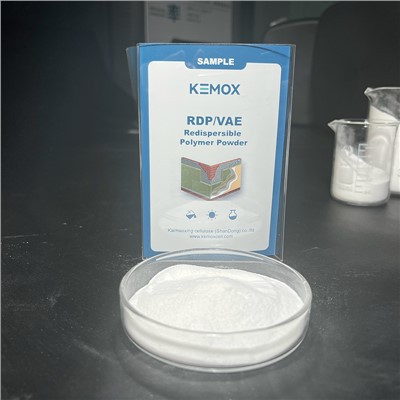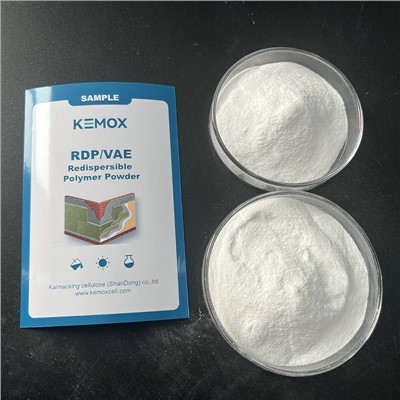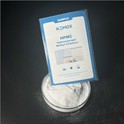Redispersible Polymer Powder
Your Leading Kaimaoxing Cellulose (Shandong) Co.,Ltd. Supplier
The Kaimaoxing factory was established in 2007. The boss and two experienced technical experts who came out of state-owned enterprises began to explore and embarked on the road of cellulose production. The first stage, 2008, ushered in the spring of China's real estate. The government commercialized houses, which set off the first small wave of real estate in Chinese history. A steady stream. With the gradual increase in orders from the factory, the factory expanded its production capacity for the first time and added production lines. At this time, our customers were all domestic. Until 2016, we increased the orders of many traders, who continuously sold the goods of Kaimaoxing factory to all over the world. In order to adapt to the needs of domestic competition and keep in line with foreign situations, we have been expanding our scientific research personnel and technical personnel.
Why Choose Us?
High quality
Our products are manufactured or executed to very high standards, using the finest materials and manufacturing processes.
Rich experience
We are serving more than 2,000 customers, provide reasonable solutions for joint agent applications and other fields.
Demand and application
We have been committed to research more applications of products will expand more products to meet the different needs of customers.
Technology support
From the two technical personnel when the factory was first established to the current technical team of 22.
What is Redispersible Polymer Powder?
Redispersible polymer powder (RPP) is a polymer capable, when mixed with water, to redisperse, again form aqueous polymer dispersions, which, as a result of curing, form a continuous polymer film, contributing to high water-holding capacity, adhesion and workability of dry building mixtures.
Benefits of Redispersible Polymer Powder
1. Enhanced bonding strength
When it comes to tile adhesives, the primary concern is always the bonding strength. RPP boasts exceptional bonding properties, ensuring that your tiles remain securely in place for years to come. The polymer particles in RPP create a robust adhesive matrix when mixed with water, forming a cohesive bond between the tile and the substrate. This high-strength bond prevents tile slippage, even in areas prone to high foot traffic or exposure to moisture.
2. Improved flexibility
Tiles are often exposed to various stresses, such as temperature fluctuations and structural movements. The flexibility of tile adhesives is crucial in accommodating these changes without causing cracks or damage to the tiles. Redispersible Polymer Powder offers an ideal solution as it imparts elasticity to the adhesive. This elasticity allows the adhesive to expand and contract with the tiles, reducing the risk of cracks and ensuring the longevity of your tiled surface.
3. Water resistance
Bathrooms, kitchens, and outdoor areas are particularly susceptible to moisture and water exposure. Traditional tile adhesives can weaken and deteriorate when constantly in contact with water. RPP, on the other hand, is highly water-resistant, making it an excellent choice for wet areas. Its hydrophobic properties ensure that the adhesive remains stable and does not break down, even when subjected to prolonged water exposure.
4. Versatility
One of the standout features of Redispersible Polymer Powder is its versatility. It can be used with a wide range of tile types, including ceramic, porcelain, glass, and natural stone. This adaptability makes it a preferred choice for both interior and exterior applications. Whether you are working on a residential project or a commercial development, RPP can meet your adhesive needs.
5. Crack resistance
Cracked tiles not only compromise the aesthetic appeal of a space but also pose safety hazards. RPP has the unique ability to reduce the occurrence of cracks in tiled surfaces. Its flexibility, combined with strong bonding properties, ensures that the tiles remain intact even in situations where traditional adhesives might fail. This leads to a more durable and attractive tile installation.
6. Environmentally friendly
In today’s environmentally conscious world, sustainable building practices are a top priority. Redispersible Polymer Powder aligns with these principles as it is an eco-friendly choice for tile adhesives. It is manufactured with minimal environmental impact and is often free from harmful volatile organic compounds (VOCs). Using RPP not only benefits your project but also contributes to a greener future.
7. Cost-effective
While the initial cost of RPP-based tile adhesives may be slightly higher than traditional options, the long-term benefits far outweigh the investment. The durability and resistance to wear and tear mean fewer repairs and replacements in the future. This translates to cost savings over the lifespan of your tiled surfaces.
Vinyl acetate ethylene (VAE) redispersible polymer powder: VAE RPPs are among the most widely used types. They are produced by copolymerizing vinyl acetate and ethylene. VAE RPPs offer good adhesion, flexibility, and excellent water resistance, making them ideal for applications like tile adhesives, cement-based renders, and self-leveling compounds.
Vinyl acetate versatate (VeoVa) redispersible polymer powder: VeoVa RPPs are based on the copolymerization of vinyl acetate and a small amount of VeoVa monomers. They provide enhanced flexibility, adhesion, and resistance to alkali and UV radiation. These properties make them suitable for use in exterior insulation and finish systems (EIFS), cementitious renders, and crack fillers.
Acrylic redispersible polymer powder: Acrylic RPPs are derived from acrylic esters and offer excellent durability, weather resistance, and flexibility. They are commonly used in waterproofing membranes, cement-based adhesives, and flexible polymer-modified mortars.
Styrene butadiene (SB) redispersible polymer powder: SB RPPs are produced by copolymerizing styrene and butadiene. They provide good adhesion, flexibility, and impact resistance. SB RPPs are often used in tile adhesives, grouts, and repair mortars.
Ethylene vinyl acetate (EVA) redispersible polymer powder: EVA RPPs are produced by copolymerizing ethylene and vinyl acetate. They offer excellent flexibility, impact resistance, and low-temperature properties. EVA RPPs are commonly used in flexible polymer-modified mortars, grouts, and sealants.
Polyvinyl alcohol (PVA) redispersible polymer powder: PVA RPPs are made from polyvinyl alcohol and are often used as an additive in cement-based formulations to improve workability, adhesion, and water retention.
Hydroxypropyl methylcellulose (HPMC) modified redispersible polymer powder: HPMC-modified RPPs combine the benefits of RPPs with the water retention properties of HPMC. They are used to enhance the workability, adhesion, and open time of cement-based products.
Carboxylated redispersible polymer powder: Carboxylated RPPs are modified with carboxyl groups to improve their compatibility with cement and enhance their water resistance. They are used in applications where improved adhesion and water resistance are critical.
Hydrophobic redispersible polymer powder: These RPPs are designed to repel water and are often used in applications where water resistance is essential, such as in the production of water-resistant adhesives and coatings
Combination RPPs: Some RPPs are customized by blending different polymer types to achieve specific properties. For example, a combination of VAE and acrylic RPPs might be used to achieve a balance between adhesion and durability.
Application of Redispersible Polymer Powder




Exterior insulation and finishing system (EIFS)
EIFS is a popular method of covering exterior walls with weather resistant insulation. One of the main components of EIFS is RDP. It contributes to the strength, adhesion and flexibility of EIFS, ensuring it can withstand varying weather conditions.
Tile adhesive
Tile adhesives are widely used in interior and exterior tile applications. RDP is used to enhance the performance of these adhesives by increasing bond strength, flexibility and water resistance. This ensures that the tiles will stay in place even under heavy loads or changing weather conditions.
Self-leveling floor compound
Self-leveling floor compound is used to create a smooth, level surface on concrete floors. Adding RDP to these compounds improves the adhesion, processability and flow of the mixture. This ensures a flat, level and durable floor.
Mortar and plaster
Mortar and plaster are used to bond brick, stone and concrete blocks together and to create a smooth finish on walls. RDP is an important part of these blends as it improves their water resistance, adhesive properties and flexibility. This means mortars and plasters can withstand different weather conditions and remain strong over time.
Gypsum board joint compound
Drywall joint compound is used to fill gaps and joints between drywall. Adding RDP to these compounds improves processability, adhesion and durability. This ensures that the joint compound remains strong, crack resistant and easy to apply.
Waterproof membrane
Waterproofing membranes are used to prevent water from penetrating buildings. RDP has been added to these membranes to enhance their flexibility and adhesion, ensuring they can withstand varying weather conditions and remain strong over time.
Plastering
Plastering is the process of applying a layer of plaster to walls and ceilings. RDP is used to improve the adhesion and workability of the stucco, ensuring that it will apply smoothly and evenly.
Textured coating
Textured paints are used to create decorative effects on exterior walls. RDP is used to increase the bond strength and durability of these coatings, ensuring they can withstand varying weather conditions and remain attractive over time.
Components of Redispersible Polymer Powder
Polymer binder: The polymer binder is the main component of redispersible polymer powder and provides adhesive and cohesive properties to the final product. Common polymer binders include vinyl acetate ethylene (VAE), vinyl acetate ethylene carbonate (VAVe), vinyl acetate/ethylene carbonate/ethylene (VAVeO), and ethylene vinyl acetate (EVA).
Additives: Various additives such as dispersants, plasticizers, surfactants and protective colloids are added to the redispersible polymer powder formula to enhance properties such as water resistance, processability and adhesion.
Benefits of HEC For Home Care
1.Selecting polymer
The first step in manufacturing redispersible polymer powder is selecting the right type of polymer. The type of polymer used in producing redispersible polymer powder is mainly selected according to the properties desired in the final product. Different types of polymer tend to give different properties to the redispersible polymer powder.
For instance, some polymers can help enhance flexibility, adhesion and water resistance in the mortar. Most commonly, manufacturers of high quality redispersible polymer powder use acrylic polymers, ethylene copolymers, and styrene-butadiene copolymer for best results.
01
2.Preparing solution
After selecting the polymer, it is dissolved in a specific solvent to form a solution. Most commonly used solvents to manufacture redispersible polymer powder are organic and water solvents, such as isopropanol, and ethanol. Usually, the concentration of polymer in the solvent is around 10% to 20%.
02
3.Atomization
Atomization is the next step in manufacturing high quality redispersible polymer powder. This process involves breaking the dispersed polymer solution into smaller particles. To do this, the manufacturer normally use a rotary atomizer or a high-pressure nozzle.
After the smaller particles are formed, they are then dried in a hot air stream. This step turns the dispersed solution into a fine powder form.
03
4.Drying
The drying process in manufacturing redispersible polymer powder involves using a stream of hot air to remove the solvent. The process for drying is normally performed at a temperature ranging between 80-120° C.
The duration required to dry the solution completely varies. It depends on the type of polymer used, the desired particle size, and the concentration of the solution.
04
5.Milling
The final stage in manufacturing redispersible polymer powder is the milling process. This process involves physically grinding the powder obtained from spray-drying into smaller-sized particles.
To grind the powder particles into smaller size, manufacturers use either a ball mill or a hammer mill to achieve the desired size of solution particles. Normally, the particle size of redispersible polymer powder is between 5-50 microns.
05
How to Maintain Redispersible Polymer Powder
1.Keeping it in a dry, cool environment. Exposure to moisture and heat can affect the quality of the powder, causing clumping and reducing effectiveness. Therefore, it is crucial to store redispersible polymer powder in airtight containers or bags to prevent moisture from penetrating. Once open the packaging bag, please use up the powder possible at once, if not, one shall seal the packaging bag properly to prevent the powder from absorbing the moisture in the air. Additionally, keeping the powder in a cool, well-ventilated space will help maintain its integrity.
2.Storage under pressure should also be avoided. Do not stack pallets on top of each other. Another key factor in redispersible polymer powder storage is to avoid direct sunlight. Exposure to uv light can cause the powder to degrade over time, reducing its performance in construction applications. Therefore, it is recommended to store redispersible polymer powder in dark or opaque containers to protect it from sunlight.
3.It is also recommended to keep redispersible polymer powder away from sources of ignition and flammable materials. Due to its chemical composition, redispersible polymer powder may cause a fire if exposed to open flames or sparks. Therefore, powders must be stored in designated areas away from potential fire risks.
4.When transporting redispersible polymer powder, be sure to handle the material carefully to prevent damage and contamination. Using proper packaging and labeling helps ensure safe transportation and storage of powders. Additionally, when handling redispersible polymer powder, it is important to follow safety guidelines and regulations for handling hazardous materials.
5.Regular inspection and monitoring of redispersible polymer powder storage is critical to ensuring that the powder is stored correctly. This includes checking for signs of moisture, clumping or degradation, and ensuring storage areas are clean and organized. By being vigilant and proactive in maintaining storage conditions, you can extend the shelf life and performance of your redispersible polymer powder.
Properties of Redispersible Polymer Powders
When water is added to the dry mix mortar, the polymer powder becomes a dispersion and forms a film upon drying. This film promotes elasticity and adhesion. Redispersible polymer powders are classified into highly elastic with low adhesion, rigid with high adhesion, and medium elastic with standard adhesion. Water is added to some powders to impart hydrophobic characteristics to the material.
Vinyl acetate-ethylene polymers (VAE) – These powders blend the flexibility of ethylene and the adhesion of vinyl acetate, leading to many economic and ecological benefits without affecting performance.
They offer several benefits, including excellent cohesion, flexibility, good low-temperature film and variable glass transition temperature. They also show great adhesion to certain substrates like plastics and wood.
Vinyl chloride copolymers and terpolymers – These polymer powders show great water resistance, high hydrophobicity, and excellent tensile adhesion.
Terpolymers based on VEOVA and VACE – These polymer powders have extremely low transition temperatures. The benefits of using polymer powders based on VEOVA and VACE include good workability, non-slump behaviour, good tensile adhesion strength, excellent crack-bridging properties, and low stickiness.

Our Factory
Kaimaoxing Factory has focused on the production of cellulose for 15 years. During the 15 years, it has expanded its production line and floor space twice, serving more than 2,000 domestic customers. Provide reasonable solutions for joint agent applications and other fields.

FAQ
As one of the most professional redispersible polymer powder manufacturers and suppliers in China, we're featured by quality products and good service. Please rest assured to buy high-grade redispersible polymer powder at competitive price from our factory.
HEC for Ceramics, HPMC Hydroxypropyl Methyl Cellulose, Tile Adhesive HPMC

















